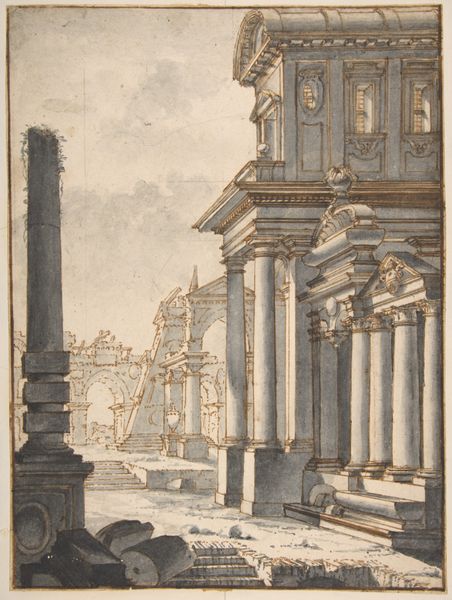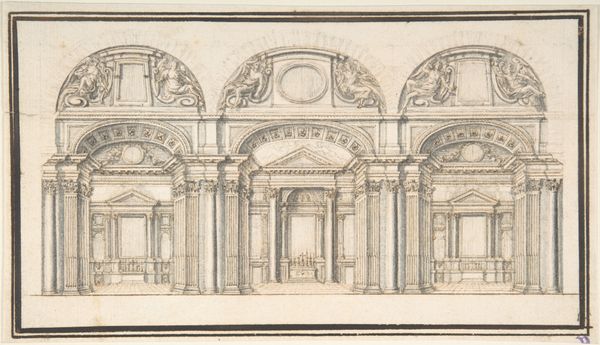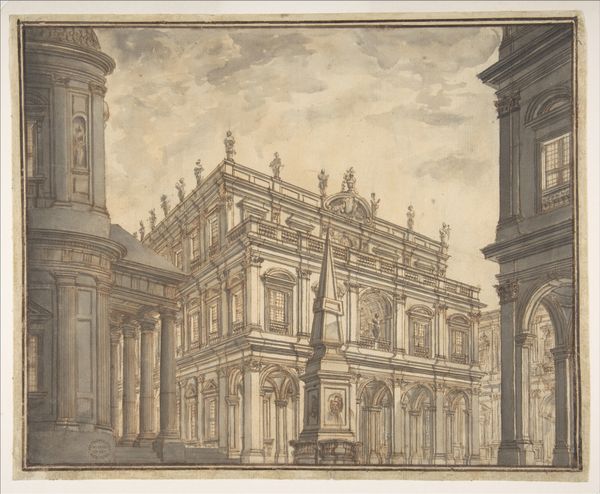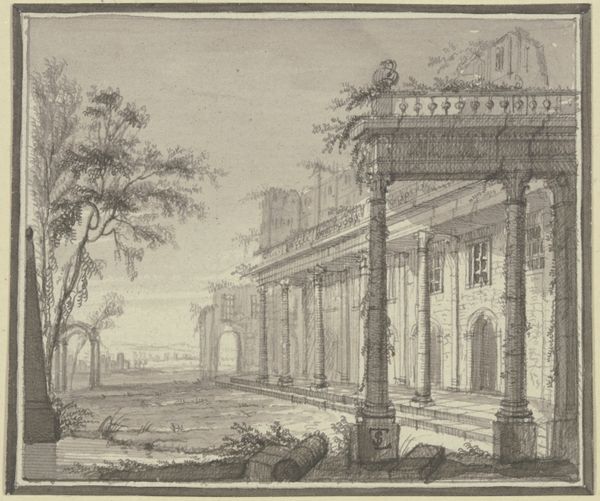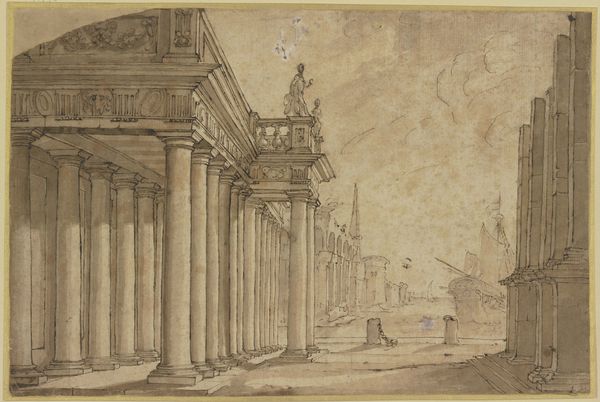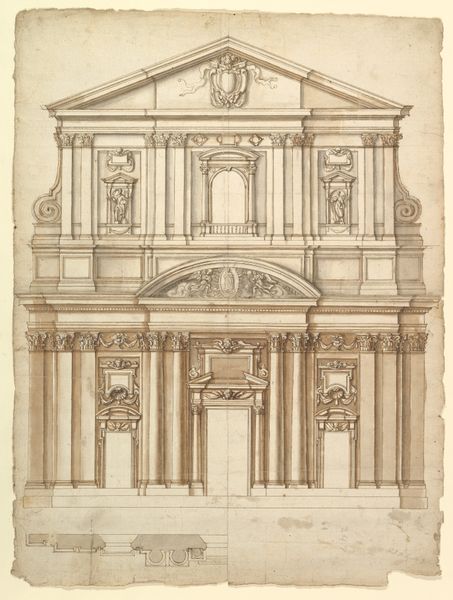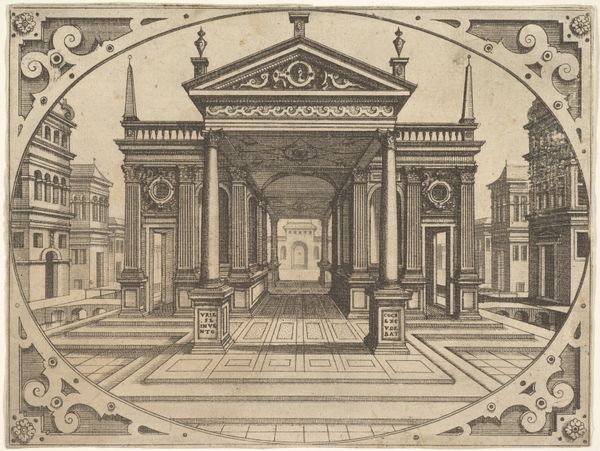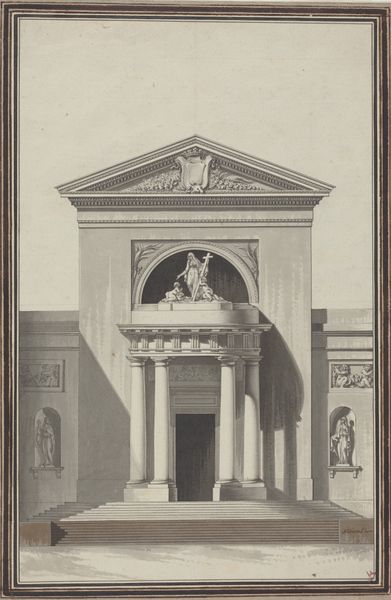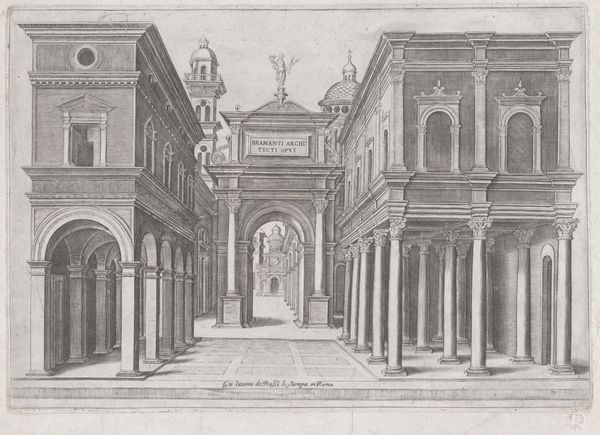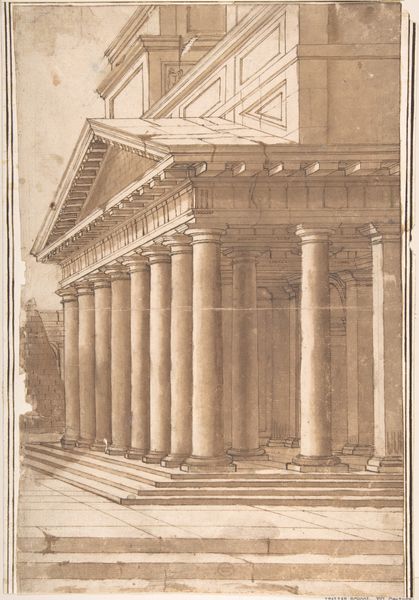
drawing, tempera, print, ink, pencil, architecture
#
architectural sketch
#
drawing
#
high-renaissance
#
tempera
# print
#
landscape
#
perspective
#
11_renaissance
#
ink
#
pencil
#
cityscape
#
early-renaissance
#
watercolor
#
architecture
Dimensions: 7-1/2 x 10 in. (19.1 x 25.4 cm)
Copyright: Public Domain
Editor: Here we have "Piazza with Obelisk," a drawing from around 1500 to 1600, currently residing at The Met. The architectural details are so precise! What immediately strikes me is the composition – that obelisk in the center really commands attention. How do you interpret this work? Curator: The obelisk, yes, it's central for a reason. It’s more than just a stone; it’s an echo of ancient power, isn’t it? Transferred from Egypt to Rome, and then redrawn into the Renaissance cityscape, it speaks volumes about cultural memory and ambition. How do you think placing it within a contemporary piazza changes its symbolic weight? Editor: Well, it's almost like claiming that power for the present – linking back to the grandeur of the past to legitimize the current era. Do the surrounding buildings contribute to this feeling? Curator: Precisely! Notice the architectural vocabulary: classical orders, symmetrical facades. They’re consciously evoking Roman imperial architecture, a visual language of authority. It’s a statement about civic pride and the continuity of civilization. This arrangement -- what feelings does it evoke? Editor: I suppose, a sense of order and permanence? I initially saw the drawing as beautiful but somewhat sterile, yet your comments have made me rethink. Is the artist saying that societies need to connect to previous values? Curator: Values? Perhaps. The imagery may symbolize stability, perhaps even dominance. It prompts consideration as to the messages societies want to convey through their monumental works, then and now. A simple drawing is not so simple, wouldn’t you agree? Editor: Absolutely! I came in seeing just an architectural sketch, and now I see layers of meaning. Curator: Indeed. Visual symbols operate across time; an obelisk then and now, holds considerable cultural weight.
Comments
No comments
Be the first to comment and join the conversation on the ultimate creative platform.
